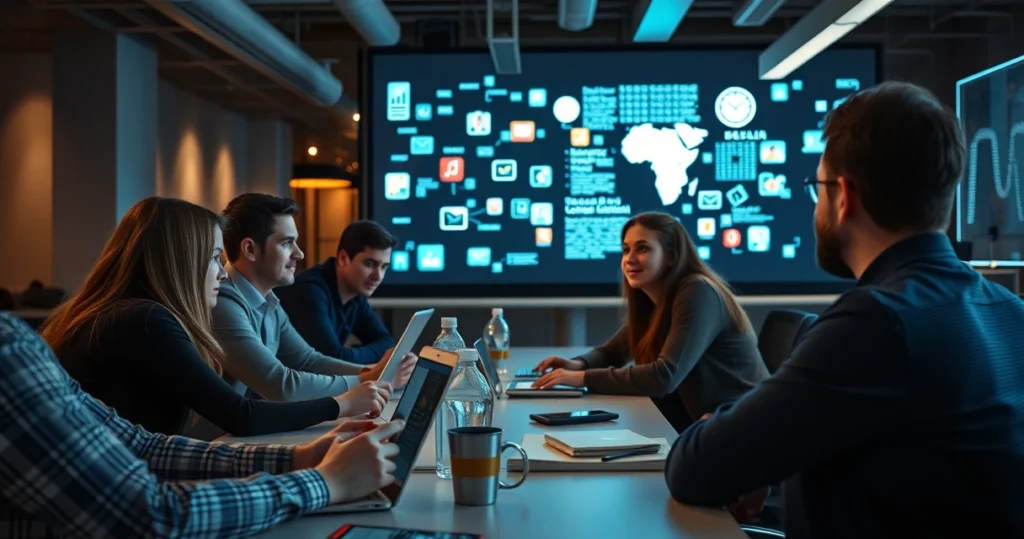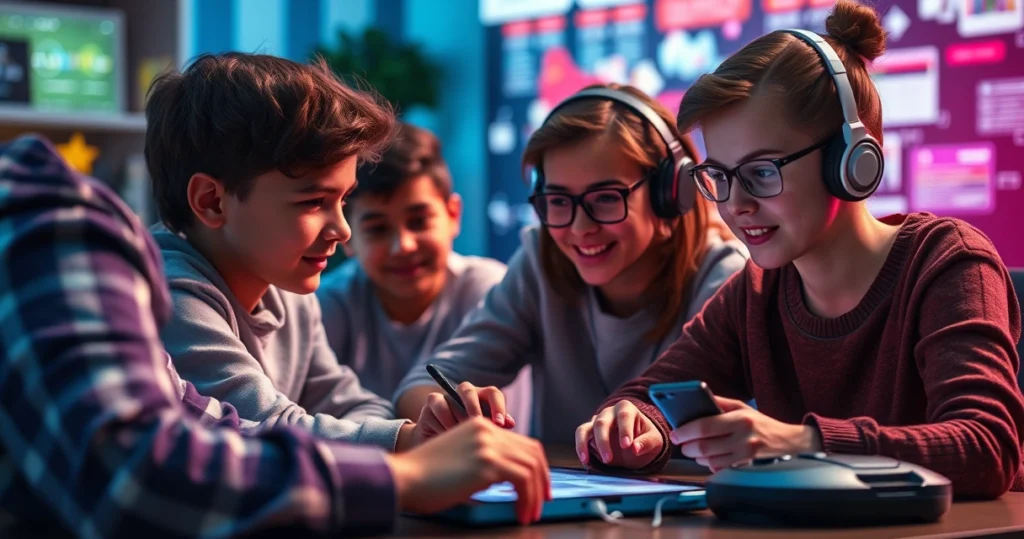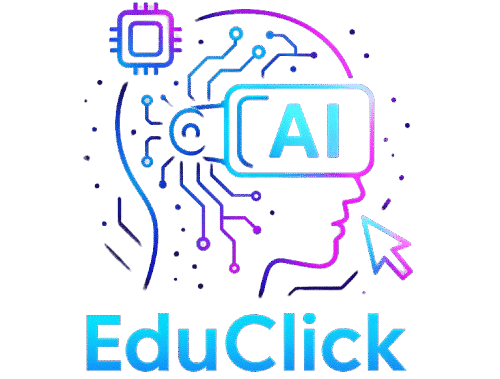Harnessing Social Media: Transforming the Future of Student Engagement and Learning
Embracing Social Media: A Personal Connection to Education
Imagine a world where learning is as engaging as your favorite social media platform, where the barriers of traditional classroom walls are broken down, and every student can access a wealth of information and interaction at their fingertips. As you scroll through your feeds, you’re not just catching up with friends or celebrities; you’re participating in a vibrant community of learners, sharing insights and tackling challenges together. This isn’t just a futuristic dream—it’s already happening, transforming the way you, and countless others, experience education.
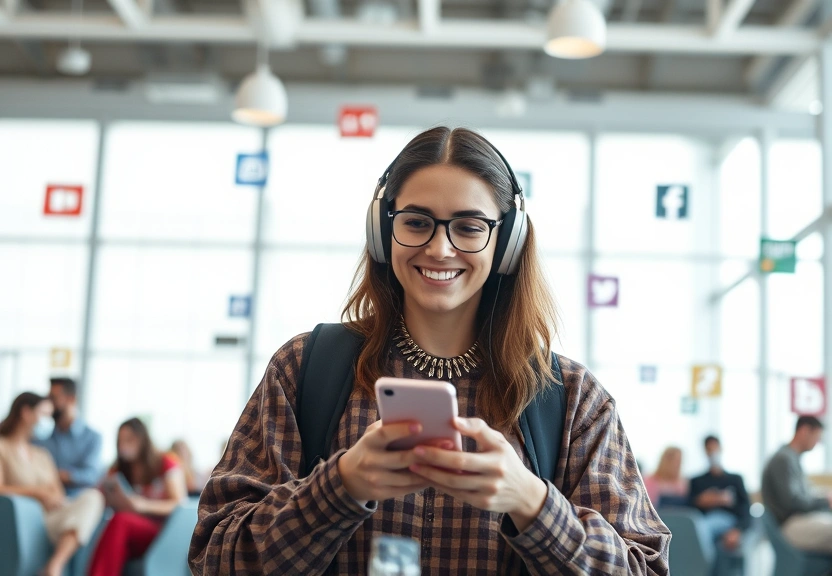
Reflect back to a time when you felt disconnected in a classroom setting, when the static delivery of information seemed to sap your energy rather than fuel your curiosity. Now, compare that feeling with the excitement of engaging posts and discussions on social media. You might recall a moment when a tweet or a TikTok taught you something new, sparking an interest that traditional methods hadn’t. Social media can do more than entertain; it can educate, inspiring students who once felt left behind to take charge of their learning journey.
In today’s digital age, the influence of social media extends beyond personal interactions, reshaping educational landscapes worldwide. You might have noticed how teachers and students leverage these platforms to create a dynamic, interactive learning environment. Whether through collaborative projects on LinkedIn or virtual study groups on Facebook, social media fosters a sense of community and motivates students to engage more deeply with their studies.
As you delve into this article, you will explore how social media is not just a tool but a transformative force shaping the future of education. It promises to revolutionize how subjects are taught, how students engage, and how learning is perceived. Join us on this journey to uncover the innovative strategies educators are employing and the profound impact these changes are having on student engagement and learning outcomes.
The Power of Social Media in Modern Education
Breaking Down Learning Barriers
Social media acts as a bridge, connecting students across geographical and cultural boundaries. It provides a platform where learners can share experiences and exchange knowledge without the constraints of location. This democratization of education facilitates greater access to educational resources, enabling students from diverse backgrounds to learn from one another.
- Platforms like YouTube and Khan Academy empower students to learn at their own pace.
- Facebook groups allow for real-time discussions, enhancing collaborative learning.
- Twitter hashtags enable students to follow and participate in educational trends and discussions globally.
Enhancing Student Engagement
Social media revitalizes student engagement by transforming passive learning into an active, participatory experience. It encourages students to take an active role in their education through interactive content and collaborative opportunities.
- Live streaming on platforms like Instagram Live offers real-time interaction with educators.
- Interactive quizzes and polls keep students engaged and provide immediate feedback.
- Storytelling through blogs and vlogs enhances creativity and critical thinking skills.
Promoting Digital Literacy
Incorporating social media into education prepares students for a digital-first world. By navigating these platforms, students develop essential digital literacy skills, including effective communication, critical evaluation of information, and online etiquette.
- Social media teaches students to discern credible sources from misinformation.
- Participation in online discussions hones communication skills.
- Exposure to diverse perspectives fosters inclusivity and empathy.
🎥 Vídeo complementar sobre o tópico
Innovative Strategies for Integrating Social Media in Education
Collaborative Learning through Social Networks
Social networks like LinkedIn and Facebook are more than just social hubs; they can be powerful educational tools. Educators are increasingly using these platforms to foster a collaborative learning environment where students can share knowledge, resources, and support.
- Create class-specific groups to facilitate peer-to-peer learning and support.
- Encourage students to share articles and videos related to course material.
- Use platforms like Yammer to simulate professional networking experiences.
Utilizing Multimedia for Enhanced Learning
Multimedia content, prevalent on social media, offers rich, engaging learning experiences that cater to various learning styles. Visual and auditory elements enhance comprehension and retention, making learning more accessible and enjoyable.
- Video tutorials on platforms like TikTok and YouTube simplify complex concepts.
- Podcasts provide an auditory learning option for auditory learners.
- Infographics and visual aids on Instagram enhance visual learning.
Gamification of Learning
Gamification taps into the innate human love for play and competition, using social media to make learning fun and engaging. By integrating game elements, educators can motivate students and foster a love for learning.
- Create educational challenges and quests with rewards and recognition.
- Use badges and leaderboards to encourage participation and competition.
- Incorporate virtual reality (VR) experiences for immersive learning.
Challenges and Solutions in Social Media Education
Addressing Privacy Concerns
While social media offers numerous educational benefits, it also raises privacy concerns. Students and educators must navigate these platforms responsibly to safeguard personal information.
- Educate students about privacy settings and online safety.
- Establish guidelines for appropriate online behavior and content sharing.
- Utilize closed or private groups to control access and maintain privacy.
Managing Screen Time
With increased integration of social media in education, managing screen time is crucial to ensure students maintain a healthy balance and do not experience burnout.
- Encourage regular breaks to prevent digital fatigue.
- Set boundaries for social media use during school hours.
- Incorporate offline activities to complement online learning.
Ensuring Equity and Accessibility
To fully harness social media’s potential in education, it’s important to address issues of accessibility and ensure all students have equal opportunities to benefit from these resources.
- Provide access to necessary technology and internet connectivity.
- Design content that is accessible to students with disabilities.
- Implement inclusive teaching practices that cater to diverse learning needs.
The Future of Learning: Trends and Predictions
Personalized Learning Experiences
As social media continues to evolve, it offers the potential for highly personalized learning experiences. By leveraging data analytics, educators can tailor instruction to meet individual student needs and learning styles.
- Use analytics to track student progress and customize learning pathways.
- Implement adaptive learning technologies that adjust content difficulty.
- Offer personalized feedback and support using AI-driven platforms.
Global Learning Communities
Social media has the potential to create global classrooms, where students from different parts of the world can learn together, share perspectives, and collaborate on projects.
- Participate in international exchanges and collaborative projects.
- Engage with experts and guest speakers from around the globe.
- Join online forums and communities dedicated to specific subjects.
Integration of Emerging Technologies
The integration of emerging technologies such as virtual reality, augmented reality, and artificial intelligence with social media is set to revolutionize education, providing immersive and interactive learning experiences.
- Use VR and AR for virtual field trips and simulations.
- Incorporate AI tutors for personalized learning support.
- Leverage blockchain for secure and transparent credentialing.
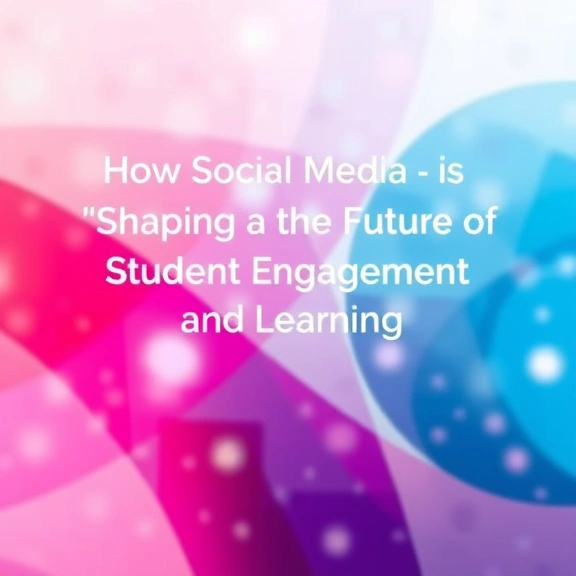
Frequently Asked Questions
How can social media enhance student engagement in learning?
Social media fosters interaction and community, making learning more engaging. Students can participate in active discussions, access diverse resources, and collaborate with peers globally. For example, platforms like Instagram offer live sessions with experts, providing real-time learning experiences that captivate students’ interest.
What are the benefits of using social media in education?
Social media broadens access to information, facilitates collaboration, and supports personalized learning. It helps develop digital literacy and critical thinking skills. For instance, Twitter enables students to follow academic discussions, while YouTube offers tutorials that cater to different learning styles.
How do educators address privacy concerns with social media in education?
Educators can mitigate privacy risks by educating students about safe online practices, using privacy settings, and forming closed groups for educational activities. Clear guidelines on appropriate behavior and content sharing are essential to protect students’ personal information.
Can social media replace traditional classroom learning?
While social media complements and enhances traditional learning, it cannot fully replace the classroom environment. It is best used as a supplementary tool that adds value by offering diverse learning methods, fostering collaboration, and providing real-world applications of knowledge.
What role does social media play in digital literacy?
Social media is crucial in teaching digital literacy by helping students evaluate information, communicate effectively, and engage in responsible online behavior. Activities such as participating in online debates or creating digital content develop critical skills necessary for navigating the digital world.
How can social media support personalized learning?
Social media supports personalized learning by offering customized content and feedback. Platforms like LinkedIn Learning provide courses tailored to individual interests and career goals, while analytics tools help educators track progress and adjust teaching strategies accordingly.
What challenges do educators face when integrating social media in education?
Challenges include managing privacy, ensuring equitable access, and balancing screen time. Educators need to establish clear guidelines, promote digital citizenship, and provide resources to ensure all students can engage with social media effectively and safely.
How is social media shaping the future of education?
Social media is creating more interactive, personalized, and global learning environments. It encourages collaboration, supports lifelong learning, and prepares students for digital careers. By integrating emerging technologies, it is set to redefine how education is delivered and experienced.
Conclusion: Embracing the Social Media Revolution in Education
As you reflect on the role of social media in shaping the future of education, consider how these platforms offer unprecedented opportunities for engagement and learning. They break down traditional barriers, allowing for a more inclusive and interactive educational experience. By leveraging the power of social media, educators can inspire students, increase accessibility, and foster a love for lifelong learning.
The future of learning is bright, with social media at its core, driving change and innovation in educational practices. It’s crucial for educators, students, and institutions to embrace these changes and harness the potential of social media as a transformative educational tool. By doing so, they can ensure that students are not only prepared for the future but are active participants in shaping it.
As you navigate this new educational landscape, remember the value of staying informed and engaged. Share your insights and experiences, and be open to learning from others. Together, we can create a learning environment that is not only technologically advanced but also deeply enriching and rewarding for all participants.
Your journey doesn’t end here. Dive deeper into the world of social media in education, experiment with new tools, and contribute to the ongoing dialogue about the future of learning. The path ahead is full of potential, and by taking part, you help shape a future where learning is as engaging and dynamic as the world around us.
Key Takeaways
- Social media is a powerful tool for enhancing student engagement and breaking down educational barriers.
- Educators can integrate social media through collaborative learning, multimedia content, and gamification.
- Challenges such as privacy, screen time, and accessibility must be addressed to maximize the benefits of social media in education.
- The future of learning involves personalized experiences, global communities, and the integration of emerging technologies.
- Active participation and open-mindedness are essential for students and educators to fully embrace the potential of social media in education.


